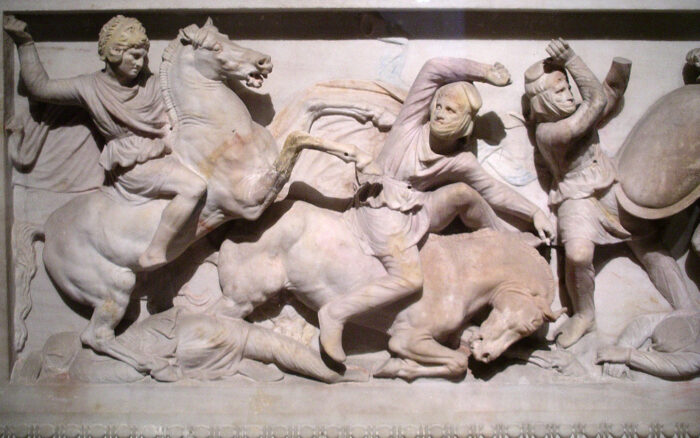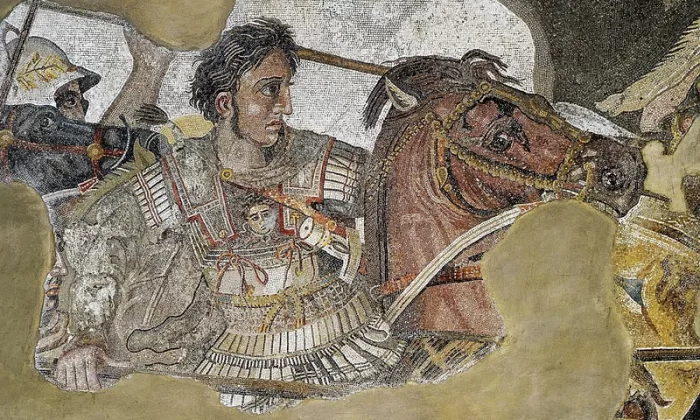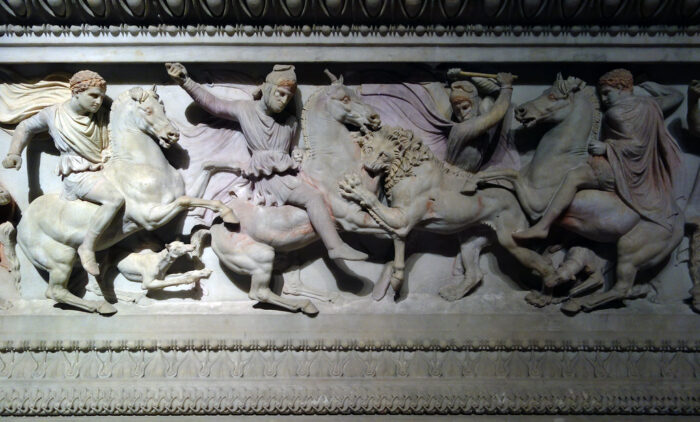Good day, class! Today we will be continuing our Greek chapter on the Alexander Sarcophagus. Let’s remember that a sarcophagus is a big coffin that contains a dead body. Now, before we look at the details on the sarcophagus, I would like to briefly review some things about its creation.
The Alexander Sarcophagus was created around the late 4th century BC and was found in the royal necropolis in Sidon, Lebanon. Although archaeologists don’t know who was buried inside this sarcophagus, it is theorized that Abdalonymus, the king of Sidon, was the owner. Looking at its material, it was built with Pentelic marble, which was one of the highest valued types of marble for its strength and clarity. Although the sarcophagus did not make the owner the main figure, the act of heroism and peace by Alexander that was brought together, created an idealistic society that they might have wanted to express.
Now, you might be wondering, “if it might have been the king inside, why is the sarcophagus named after Alexander?” Perfect question students! The big idea of this lesson is not about the person inside the sarcophagus, but the figures and their details outside.
The Battle of Alexander
On each side of the sarcophagus, there are friezes containing different scenes.
After admiring their naturalism, you can start to tell who is who based on their clothing. Starting with the guy on the left, it is easy to recognize him because he is wearing his lion helmet on his head. So class, who is he?

Yes! He is Alexander the Great! The frieze depicts Alexander the Great on one side, fighting the Persians along with his army and presumably, also with King Abdalonymus. This frieze might be displaying a scene from the Battle of Issus because of its similar appearance to the Alexander Mosaic. But excluding the idea of it representing the Battle of Issus, how do we know that some of those people are Persians? Well, we look at their clothes as mentioned before!
During ancient times, Greeks liked to expose their legs and have little clothing on, so if a figure made by the Greeks had any trousers, then they would most likely be Persian. The Persian figures were also typically displayed wearing Phrygian caps, shoes, arm covering clothes, and losing in many Greek creations.

Like the Alexander Mosaic, Greeks typically displayed a scenario to be “represented by the winners in the art that they commissioned.” In order to express their strength and excellence to not only enemies but also to themselves, art is created in a biased manner that emphasizes their victory. So, given its emphasis on the celebration during battle by the Greeks, this side of the frieze seems to be a symbol of their victorious war; however, the other side of this sarcophagus displays a different story.
Complete Opposite
On the opposite side of the previous frieze is a hunting scene. As you students can see from the picture, we still have the same people who were fighting before, but they seem to be acting differently.

As we have discussed in our previous class about the Assyrian reliefs of the lion hunts. These reliefs only portrayed one leader who would kill the lions to show off his strength and reliance to his people. This scene has the same lion hunt; however, it is not producing the same message. It unexpectedly displays how two enemies are coming together to fight against the same threat, which really shows how a common problem is best solved with the help of others. With this thought in mind, the frieze might be presenting some sort of peace and friendship between the Greeks and the Persians with each of their collaborations.
Connection
Do these opposite symbolisms happen to remind anyone of another ancient artifact? One that depicts the early lifestyles of Mesopotamia?
Oh yes, of course, it is the Standard of Ur! This piece of art had two sides, one representing “war” and the other representing “peace.” Similarly to this, the owner of the Alexander Sarcophagus might also have wanted to have something represent his society as the balance of lives even after the invasion of regions.
About the Author
Stephanie Ramos is a current student at Colgate University. She is planning on majoring in Computer Science throughout her years until 2026. Ms. Ramos had gained an interest in art pieces, which made her want to explore each of their history and meanings.
